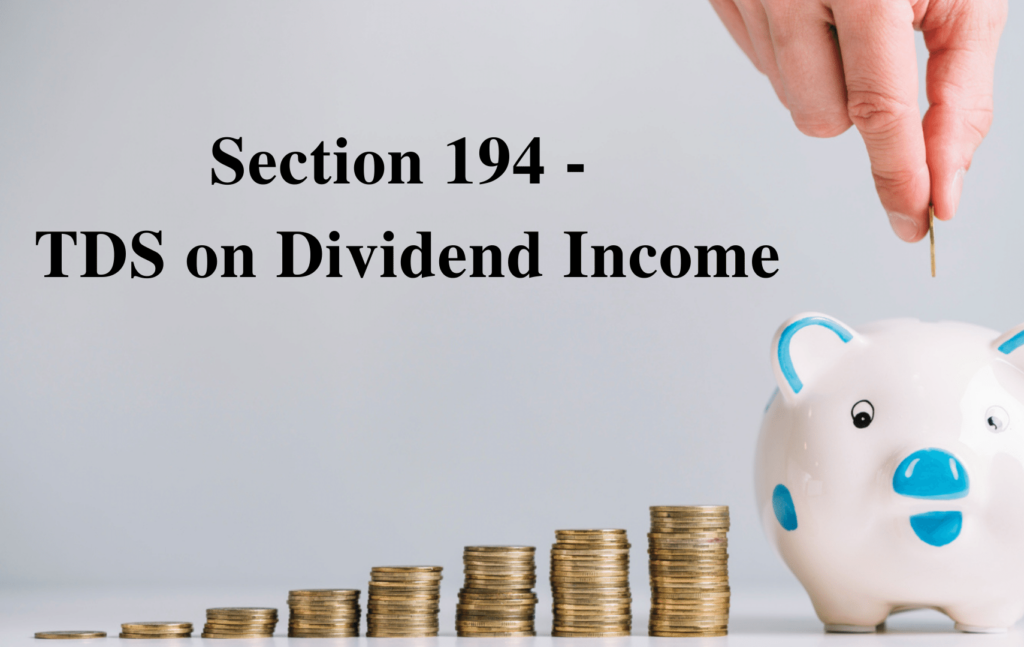TDS on dividends ensures tax collection at the source on income from equity shares or mutual funds. With equity markets thriving and dividend payouts rising understanding TDS rules is thus essential for investors. How does it work, and what are the key considerations? Let’s break it down.
What Is TDS on Dividends?
TDS on dividends in India is a mechanism where companies deduct tax before distributing dividend income to shareholders. Introduced in the Finance Act 2020, this system shifted the tax liability from companies to individual investors. As per Section 194 of the Income Tax Act, companies must deduct TDS at 10% if the total dividend income exceeds ₹5,000 in a financial year. However, this threshold has been increased to ₹10,000 starting from April 1, 2025, per the Union Budget 2025.
Key Changes in Budget 2025:
The Union Budget 2025 brought significant updates to TDS on dividends:
- Increased Threshold: The TDS exemption limit has been raised from ₹5,000 to ₹10,000 per financial year. This means TDS will only be deducted if your dividend income from a single company or mutual fund exceeds ₹10,000 in a year.
- TDS Rate: The TDS rate remains at 10% for resident individuals and 20% for non-residents, unless a lower rate applies under a Double Taxation Avoidance Agreement (DTAA).
- PAN Requirement: If you do not provide your PAN, TDS will be deducted at a higher rate of 20%.
Compliance and Key Rules:
To manage TDS on dividends in India:
- Provide PAN: Mandatory to avail 10% TDS rate; otherwise, 20% applies, per Section 206AA.
- Check Form 26AS: Verify TDS credits and also claim them in ITR to avoid double taxation, per CBDT.
- TDS Certificate: Companies issue Form 16A quarterly, detailing deductions, per Income Tax rules.
Non-compliance, like missing PAN, led to ₹2,000 crore in tax notices in 2024, per Business Standard. Companies also face 1% monthly interest for late TDS deposits under Section 201. Investors must report dividends under “Income from Other Sources” in ITR, as per Section 139.
How to Avoid TDS on Dividends:
If your total income is below the taxable limit, you can avoid TDS on dividends by submitting the following forms:
- Form 15G: For resident individuals below 60 years of age.
- Form 15H: For resident senior citizens above 60 years of age.
These forms are self-declarations stating that your total income is below the taxable limit, and no TDS is applicable. They must be submitted to the company or mutual fund at the beginning of each financial year. Failure to submit these forms will thus result in TDS being deducted at the applicable rate.
Who Is Affected?
TDS on dividends in India impacts shareholders, mutual fund investors, and NRIs, especially those with high dividend income. Small investors and senior citizens also benefit from thresholds and exemptions. In 2024, 1.2 crore taxpayers reported dividend income, per IBEF. Monitor Form 26AS and submit 15G/H timely to optimize tax outcomes. You can also learn more at the Income Tax website.
Conclusion:
TDS on dividends streamlines tax collection but requires proactive compliance to maximize benefits. Understanding TDS on dividends is also crucial for effective tax planning and maximizing your investment returns. By staying informed about the latest changes and utilizing available exemptions, you can also manage your dividend income efficiently. Ready to manage your dividends? Explore more financial insights now!
– Ketaki Dandekar (Team Arthology)
Read more about TDS on Dividends here – https://groww.in//section-194
